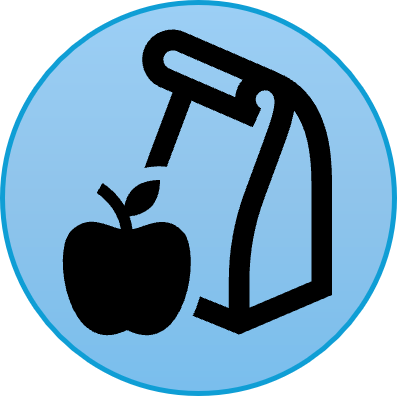Feeding Futures funding
Feeding Futures provides dedicated funding to all B.C. school districts to create or expand school food programs.
On this page

How Feeding Futures funding works
In 2023, the B.C. Government committed $214 million over three years for Feeding Futures, the largest investment in school food programs in the province’s history.
The Ministry of Education and Child Care distributes Feeding Futures funding to all school districts in B.C. The Ministry works with school districts to provide spending criteria and offer guidance on how to run programs.
- Funding allocations for each school district are available on the kindergarten to grade 12 operating grants page
Read more about why school food programs matter to students, families and the broader community.
How funding is used in schools and districts
Each school district can develop food programs that meet the needs of their students and local community. This means that school food programs might look different across schools and districts.
School food programs can differ in:
- The types of meals offered
- How often programs run
- How food is prepared or delivered to schools and students
- The types of partnerships that exist to help a program operate
Feeding Futures funding is primarily used to buy food for students. Schools and districts may:
- Purchase food directly for their school food programs
- Use third-party providers, such as non-profit organizations, to purchase, prepare, or deliver food
They may also use funding to support things like:
- Purchasing equipment and supplies for programs
- Offsetting staffing costs
To learn more about programs within your school district, please contact your district or school’s administration directly.
Feeding Futures guiding principles
The Feeding Futures guiding principles were created to help schools and districts in B.C. develop and implement school food programs. These principles are intended to guide the development of programs and are not mandatory.
Students have access to food daily in an equitable, accessible and non-stigmatizing manner

This could look like:
- Providing the same meal card for all students and discretely subsidizing it for students in need
- Using pay-what-you-can or sliding payment scale models
- Offering snacks or lunch top-up baskets in classrooms for any student to access
Programs support B.C. foods to grow local communities, economies and food system resilience

This could look like:
- Asking food suppliers, distributors, grocery stores and program delivery partners about what B.C. food options they can provide and what B.C. foods are in season
- Assessing menus and product purchases to identify opportunities for more B.C. foods, such as for everyday staples
- Checking the BC Food Directory to find B.C. food and beverage products
- Supporting food education to help students build knowledge, skills, and positive connections with food and local food systems
- Reviewing the Feed BC definitions and recommended targets to support B.C. food procurement in kindergarten to grade 12 schools
Programs are flexible, adaptable and respectful of local contexts and needs

This could look like:
- Conducting a scan of existing school food programs and systems to identify available resources and program gaps.
- Adapting program models to suit the needs of students. For example, Grab and Go models may work for older students, whereas After the Bell or Second Chance models may suit the needs of students in other environments
- Striving for continuous improvement by collecting feedback on programs or testing out new pilot projects
Students have access to nutritious and culturally preferred foods to support healthy development and learning

This could look like:
- Incorporating more nutritious and minimally processed foods into meal and snack offerings
- Inviting students and families to submit family recipes or requests for foods they want to see featured in programs
- Prioritizing time and space in the school day for eating
Programs centre and include students, families, local First Nations, Rightsholders, Indigenous partners and community members in decision-making and program delivery

This could look like:
- Working with the school district’s Indigenous Education Council to ensure that decision-making is informed by local First Nations, Rightsholders and Indigenous partners
- Involving students in school food program operations like food preparation, serving and clean-up
- Forming a school food committee with students, families and community partners to gather feedback and share information
- Partnering with local First Nations to support special events in school communities
- Partnering with conservation officers to offer local and traditional meats
These guiding principles were co-developed by the Ministry of Education and Child Care, School Food Coordinators, and the Feeding Futures Advisory Committee.
Contact information
Have a question or need help? We’re here for you. Reach out to the School Food Programs team.
